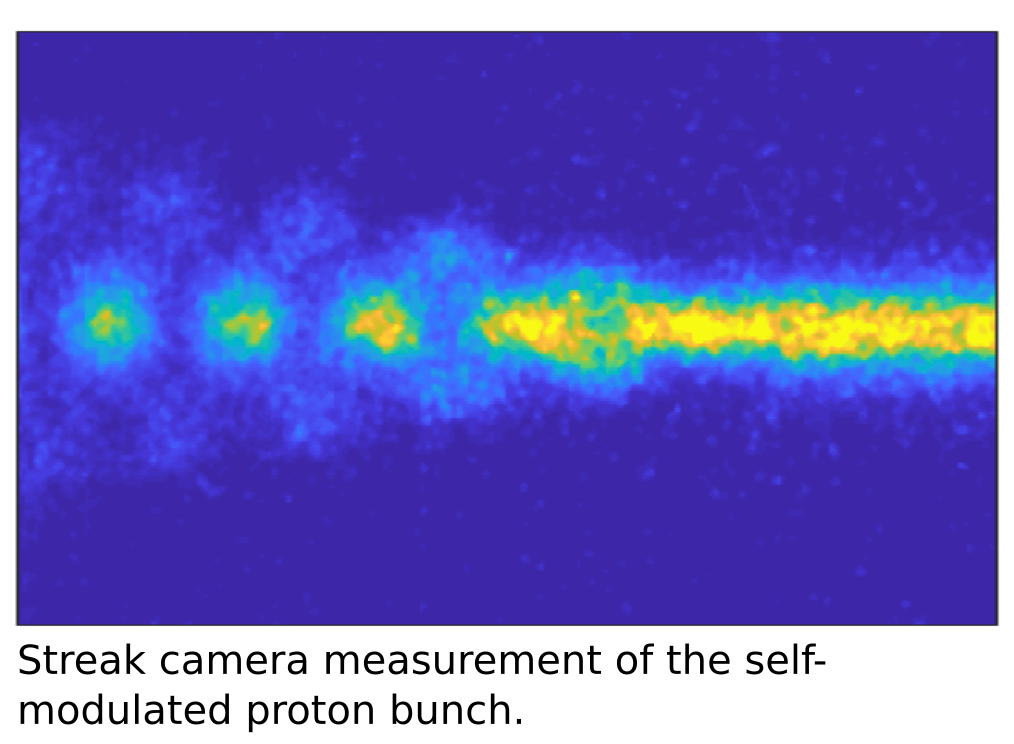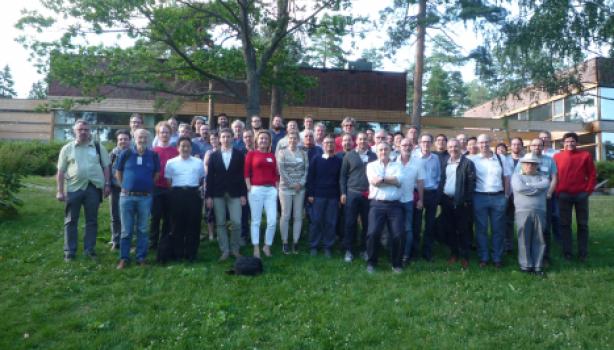The helicon plasma cell was commissioned in Building 169, where plasma generation tests are ongoing (Image: CERN)
In May 2018, the AWAKE experiment carried out the first ever acceleration of electrons using a wakefield created by protons flowing through plasma. AWAKE demonstrated that it is not only possible but also efficient to use plasma wakefields generated by proton beams to accelerate charged particles, thereby fulfilling the objective of the AWAKE Run 1 phase. The experiment was carried out over a distance of 10 metres, with a rubidium plasma cell.
The next phase, AWAKE Run 2, will start after the LS2 and involves maintaining the quality of an electron beam when it is accelerated and demonstrating the feasibility of the technology over several hundred metres. “The AWAKE plasma is currently produced by sending a laser pulse which transforms rubidium gas into plasma by ionisation. This works well as the AWAKE cell is 10 metres long, but this ionisation method is not appropriate for a larger scale”, explains Alban Sublet, an applied physicist in the Vacuum, Surfaces and Coatings group within the Technology Department.
This is where the helicon plasma cell comes in. A helicon wave is a low frequency electromagnetic wave capable of generating very high-density plasmas, like those needed for AWAKE. “We are currently working with a 1-metre prototype helicon plasma cell developed by the Institute for Plasma Physics in Greifswald (Germany). In this set-up, helicon waves are generated by radiofrequency antennas, which surround a quartz tube filled with argon at low pressure”, explains Alban Sublet. In theory, this set-up should enable very long cells to be created as the tube can be extended and antennas added to spread the plasma over long distances.
Ensuring that the generated plasma remains homogeneous throughout the cell remains a challenge. How can we be sure that the density required for AWAKE is uniformly reached throughout the cell? “For the time being we only have a diagnostic tool that enables us to measure the density profile of the plasma locally”, points out Alban Sublet. “So far, we have deduced the density of the rubidium plasma cell indirectly by measuring the density of the rubidium gas before it is ionised”, adds Edda Gschwendtner, technical coordinator and leader of the AWAKE project at CERN.
To resolve this problem, the team responsible for the tests is currently working in collaboration with the University of Wisconsin (UW), Madison (United States) and the Swiss Plasma Center (SPC) at the EPFL in Lausanne. Two plasma diagnostic techniques are currently being studied and will be tested at CERN in 2020. “Developing a diagnostic tool capable of measuring the uniformity of the plasma with the precision required by AWAKE throughout the length of the cell is a significant challenge”, explains Alban Sublet. “Once we have developed a reliable diagnostic method, we will be able to optimise the helicon plasma cell and then design a longer helicon cell for use in AWAKE in a few years.” Synergies exist with the field of coatings and surface treatments, where this type of plasma might be used in the future, as is the case for certain industrial applications.
Article also published on home.cern.







